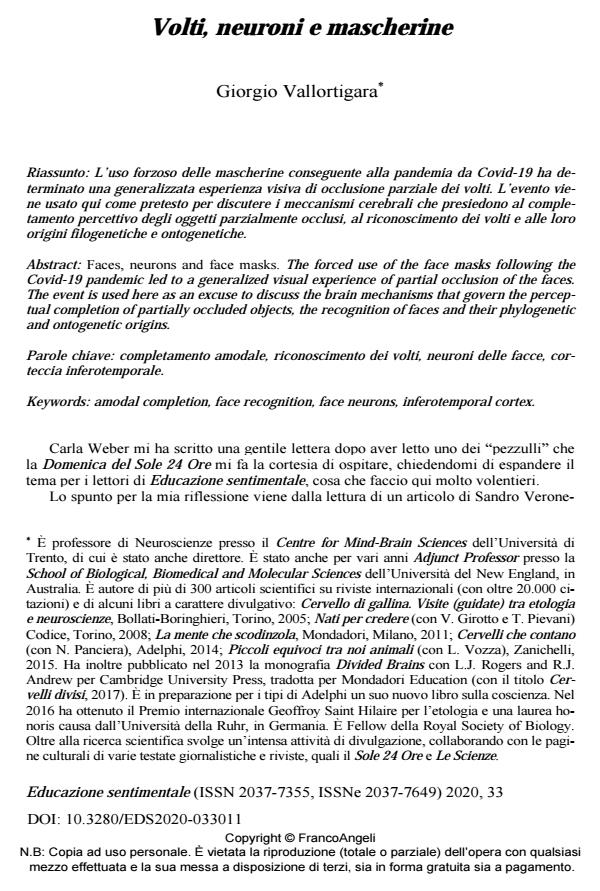Volti, neuroni e mascherine
Journal title EDUCAZIONE SENTIMENTALE
Author/s Giorgio Vallortigara
Publishing Year 2020 Issue 2020/33
Language Italian Pages 10 P. 102-111 File size 295 KB
DOI 10.3280/EDS2020-033011
DOI is like a bar code for intellectual property: to have more infomation
click here
Below, you can see the article first page
If you want to buy this article in PDF format, you can do it, following the instructions to buy download credits

FrancoAngeli is member of Publishers International Linking Association, Inc (PILA), a not-for-profit association which run the CrossRef service enabling links to and from online scholarly content.
Faces, neurons and face masks. The forced use of the face masks following the Covid-19 pandemic led to a generalized visual experience of partial occlusion of the faces. The event is used here as an excuse to discuss the brain mechanisms that govern the perceptual comple-tion of partially occluded objects, the recognition of faces and their phylogenetic and ontogenetic origins.
Keywords: Amodal completion, face recognition, face neurons, inferotemporal cortex.
Giorgio Vallortigara, Volti, neuroni e mascherine in "EDUCAZIONE SENTIMENTALE" 33/2020, pp 102-111, DOI: 10.3280/EDS2020-033011